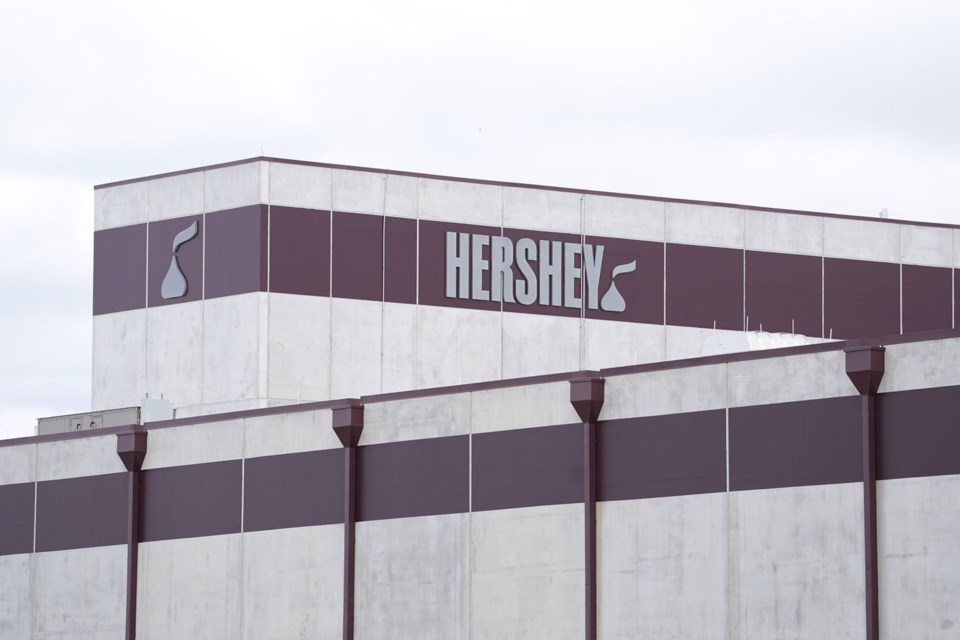Here’s the good news: The Hershey Co. says it’s not raising prices for Halloween candy this year.
But here’s the bad news: Hershey and other chocolate makers are continuing to hike prices, saying a volatile cocoa market gives them no choice.
Hershey, the maker of Reese’s, Whoppers, barkThins and other chocolate candies, said Wednesday that it will be raising U.S. retail prices later this fall. In some cases, pack sizes will get smaller; in others, list prices will rise. The average price increase will be in the low double-digit percentages.
“This change is not related to tariffs or trade policies. It reflects the reality of rising ingredient costs including the unprecedented cost of cocoa,” Hershey said in a statement.
Hershey stressed that the price increases won’t apply to products specially packaged for Halloween.
On Tuesday, Swiss chocolatier Lindt said it raised prices by 15.8% in the first half of this year. The company said it was able to offset some of the higher cost of cocoa with long-term contracts but had to pass much of it on to consumers.
“The development of the global chocolate market in the first half of 2025 was a continuation of what we saw in 2024, with cocoa prices remaining close to record highs,” said Adalbert Lechner, Lindt’s CEO, in a conference call with investors.
Cloetta, a Swedish confectionary company, told investors last week that it raised chocolate prices in the second quarter. And Nestle raised U.S. prices for products like Toll House chocolate chips in the spring.
Cocoa prices have more than doubled over the past two years due to poor weather and disease in West Africa, which supplies more than 70% of the world’s cocoa.
Cocoa futures, which are binding contracts for a specific quantity of cocoa, stood at $7,380 per metric ton on Wednesday, according to the International Cocoa Organization, which releases a daily average of prices in London and New York.
That’s down from December’s peak of $11,984, but it’s still 121% higher than two years ago.
And the situation remains volatile. According to the International Cocoa Organization, prices surged in early June on concerns about production in Ivory Coast but eased on optimistic forecasts for production in Ghana and Latin America. They rose again in late June after heavy rains in West Africa, which could worsen the outbreak of diseases that harm crops.
“It’s almost a bit dangerous to comment on this because it’s changing so fast,” Cloetta Chief Financial Officer Frans Ryden said last week in a conference call with investors. “This is something that's moving hugely up and down all the time.”
Meanwhile, prices have been rising on store shelves. The average unit price of a chocolate bar in the U.S. in July 2021 was $2.43, according to Nielsen IQ, a market research company. As of last week, it was $3.45, a 41% increase.
That’s hurting customer demand. Nielsen said unit sales of chocolate fell 1.2% in the year ending July 12.
Tariffs could also impact U.S. prices. President Donald Trump threatened a 21% tariff on cocoa and other products from Ivory Coast in April, for example, but then paused the tariffs’ implementation.
The National Confectioners Association is asking the Trump administration to protect cocoa from tariffs. The group says the U.S. imports nearly $4.4 billion in chocolate, cocoa and candies each year, and the association's members export nearly $2 billion in American-made chocolates and candy annually.
Dee-ann Durbin, The Associated Press



